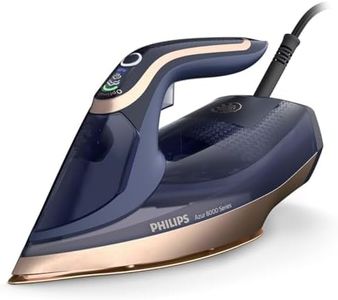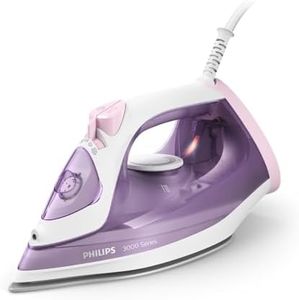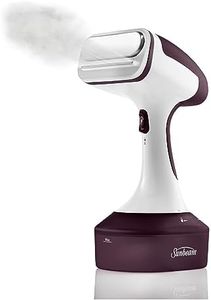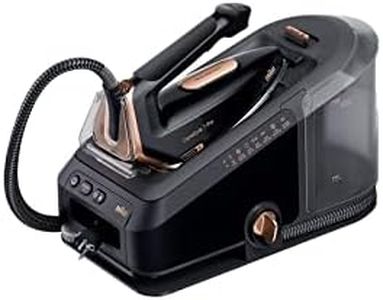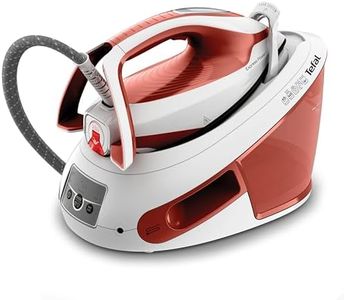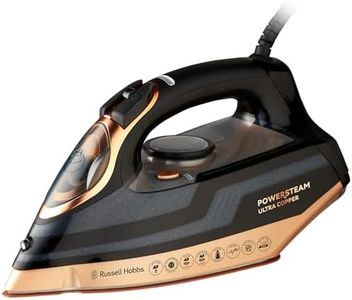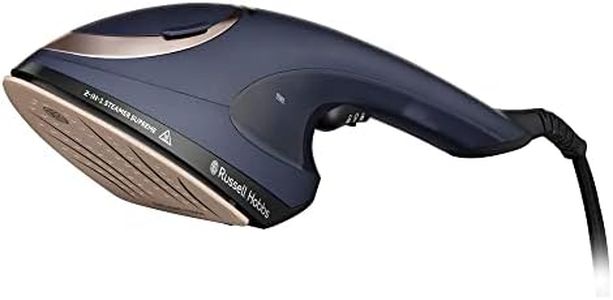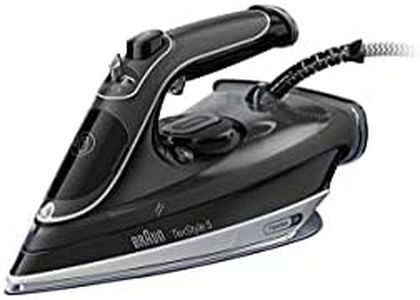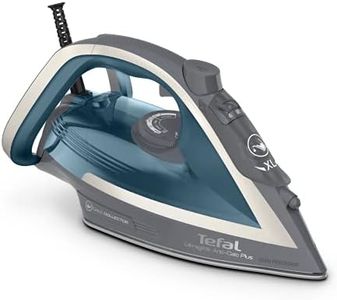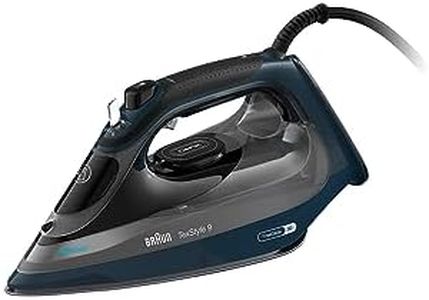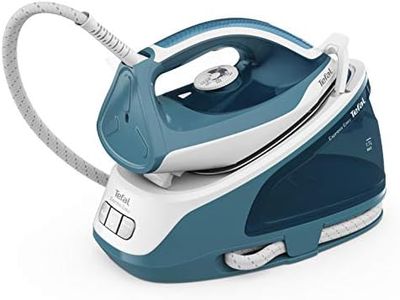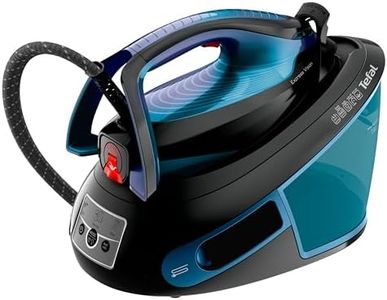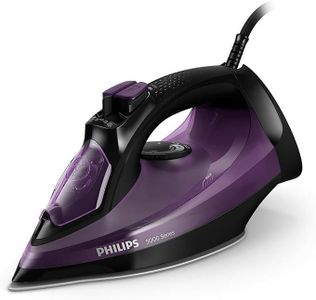We Use CookiesWe use cookies to enhance the security, performance,
functionality and for analytical and promotional activities. By continuing to browse this site you
are agreeing to our privacy policy
10 Best irons
From leading brands and best sellers available on the web.By clicking on a link to a third party's website, log data is shared with that third party.
Buying Guide for the Best irons
Choosing the right iron can make your laundry routine much smoother and help keep your clothes looking sharp with less effort. The best iron for you depends on how often you iron, the types of fabrics you handle, and what features make the task easier or more efficient for you. By understanding the key specifications, you can decide which features are most useful and which iron will best fit into your household routine.WattageWattage refers to the power output of the iron, indicating how quickly it heats up and how well it maintains temperature during use. Higher wattage irons (usually 2000 watts and above) heat up faster and are better for frequent or heavy-duty ironing jobs, like large piles of shirts or thicker fabrics. Lower wattage irons (1200 to 1700 watts) are often sufficient for occasional use or lighter fabrics but may take a bit longer to heat up and may struggle with tough wrinkles. Think about how much ironing you do and how quickly you want to get the job done when considering wattage.
Steam OutputSteam output shows how much steam the iron produces, which helps to relax fabric fibers and remove wrinkles more effectively. Basic irons have lower steam output, which is fine for lightweight fabrics and infrequent ironing, while models with higher steam output (including those with steam burst or vertical steaming options) are ideal for thicker fabrics, stubborn creases, or even for freshening up hanging clothes. If you iron a lot of cotton, linen, or tough fabrics, higher steam output will make your life easier, while for delicate or occasional use, a simpler system may be enough.
Soleplate MaterialThe soleplate is the flat surface that glides over your clothes. Common materials include stainless steel, ceramic, and non-stick coatings. Stainless steel is durable, smooth, and distributes heat evenly, making it a solid all-round choice. Ceramic soleplates offer excellent heat distribution and tend to glide smoothly, with the added benefit of being less likely to stick to fabric. Non-stick plates are useful for avoiding fabric sticking and are easy to clean but may be less durable over time. If you iron a variety of fabrics or want longevity, stainless or ceramic are great; for ease of use and cleaning, non-stick is handy, especially for beginners.
WeightIron weight impacts how easily you can maneuver the iron. Heavier irons press down on clothes with more force, helping to eliminate wrinkles faster and making them ideal for heavy fabrics, but they can tire your arm if you have lots to iron. Lighter irons are easier to use for longer periods and are preferable if you have mobility issues, but may require more passes over tough wrinkles. Choose a weight that feels comfortable for you to hold during a typical ironing session.
Water Tank CapacityThe water tank holds the water needed for steam. Larger tanks mean you can iron longer without refilling, which is helpful for big loads, while smaller tanks keep the iron lighter and are often found in more compact models. If you often iron lots of clothes at once, a bigger water tank will save you trips to refill. For occasional or travel use, a smaller, lighter iron might be more convenient.
Temperature and Steam ControlsBeing able to adjust temperature and steam output is important for handling different fabrics. Basic irons have preset levels, which work for those who stick to a similar type of clothing, while more advanced models give you finer control for delicate or specialty garments. If you iron silk, wool, and synthetics as well as cotton, look for more adjustable settings. If you mostly iron the same kinds of fabrics, simpler controls may suffice.
Auto Shut-OffAuto shut-off is a safety feature that turns the iron off if it’s left idle for a certain period. This can prevent accidents, especially if you get distracted or forget to unplug the iron. For busy households or anyone concerned about safety, this is a valuable feature, but for very cautious or infrequent users, it might be less of a priority.
Cord Length and SwivelIron cords come in various lengths, and some feature a swivel joint to reduce tangling. A longer cord and a swivel base increase mobility and make ironing large garments or larger areas easier, while a shorter cord might suffice for compact spaces. If your ironing board isn’t close to a power source or you want the freedom to move around, a longer cord with a swivel option is handy; otherwise, a basic cord may be enough.

